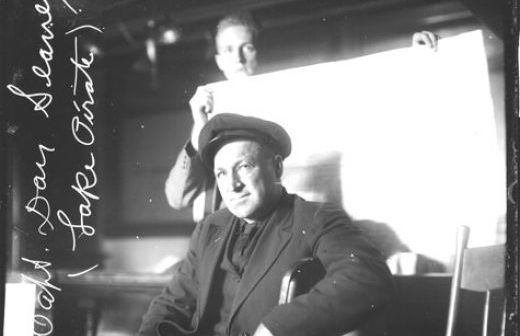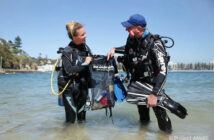Who said pirates didn’t exist on the Great Lakes?
“Roaring” Dan Seavey, born March 23, 1865, in Portland, Maine, USA, lead a very full life as a sailor, fisherman, farmer, saloon keeper, prospector, US Marshal, thief, poacher, smuggler, hijacker and a human trafficker, but was more notably known as a pirate on the Great Lakes in the late-19th to early-20th century. He was the only “pirate” formally charged with piracy on the Great Lakes.
Seavey left home at age 13 to become a sailor and served for a short time in the United States Navy. Looking for a different lifestyle, he moved to Wisconsin, got married, had two daughters and worked as a farmer, fishermen and saloon owner. Times were tough for Seavy and he left his family and headed to the Yukon to make his fortune in the Klondike Gold Rush. Broke and no success at finding gold, he returned to Michigan and somehow acquired a schooner.
Setting out on his next adventure, after acquiring the Schooner, and naming it the “Wanderer”, Seavy sailed it as a seemly legitimate shipping operation, but was masquerading as a pirate. He went into ports at night and stole cargo from warehouses and other docked vessels. It was easy at that time, after his thefts, to take the cargo down the road and sell it. Much of his profit came from venison pouching. Seavy also had a trick called “moon cussing” which was altering sea lights, either by extinguishing existing lights or placing false lights. This trick caused sailing vessels to crash into rocks, where Seavy’s crew would board the injured ship(s) to steal onboard cargo. The “Wanderer” with Seavy at the helm also kidnapped and transported women in the illegal trade of prostitution, an early form of human/sex trafficking.
But alas, Seavey’s biggest exploit of which he was captured and sent to Chicago in irons seemed to be his last. On 11 June 1908, Seavey landed in Grand Haven, Michigan with a large amount of alcohol, which he offered to share with the crew of the “Nellie Johnston”. Once they became intoxicated, Seavey tossed them overboard and sailed the Nellie Johnson to Chicago, where he sold the cargo. The United States Revenue Cutter Service gave chase. He was captured a few days later after giving up the Nellie Rose and was once again sailing the Wanderer.
Luck was with Seavey when he was in court on charges of “unauthorized removal of a vessel on which he had once been a seaman”. The owner of the Nellie Rose did not appear in court and the charges were dropped. At the end of his career he made a switch to upholding the law by accepting a position as a United States Marshall where he worked to curb poaching, smuggling, and piracy on Lake Michigan.
The Wanderer was destroyed by fire in 1918, and to this day it is unclear if he continued as a marshal or an outlaw or both after purchasing a motor launch. Motor launches were a favourite of Great Lakes smugglers when prohibition began in 1919.
Seavey seemed to either have luck on his side or was a “smart pirate”. He always declared that he won the Nellie Johnston in a poker game! He retired to Wisconsin, USA in the late 1920’s and died in a nursing home in 1948, at the age of 84.









